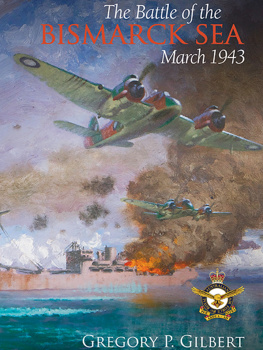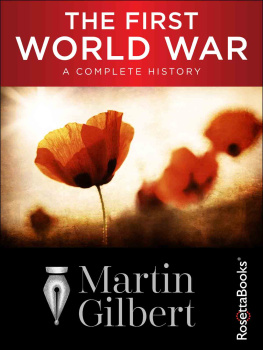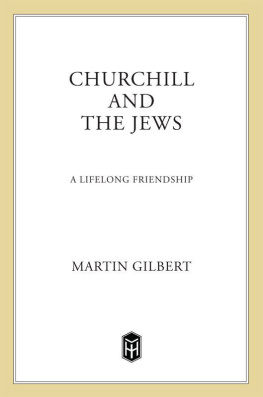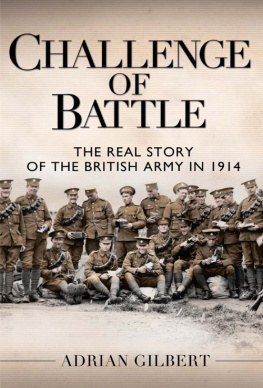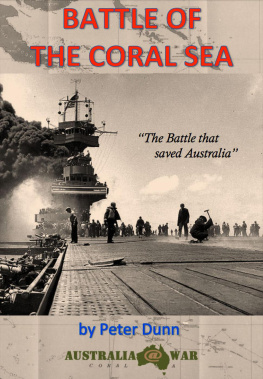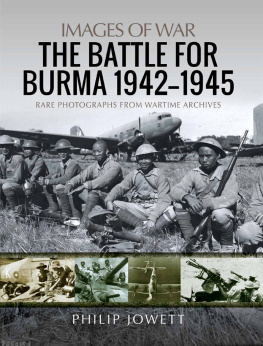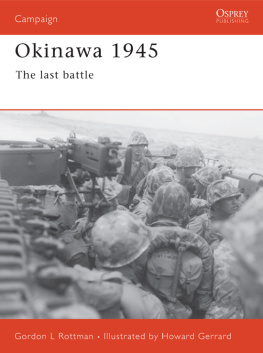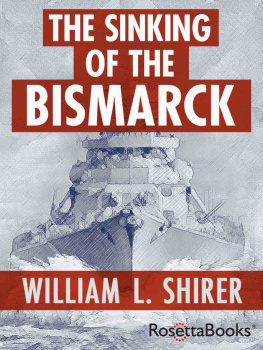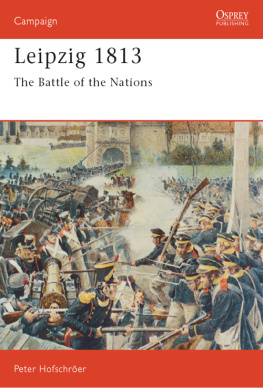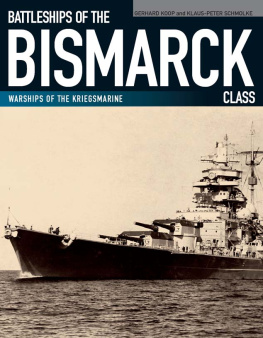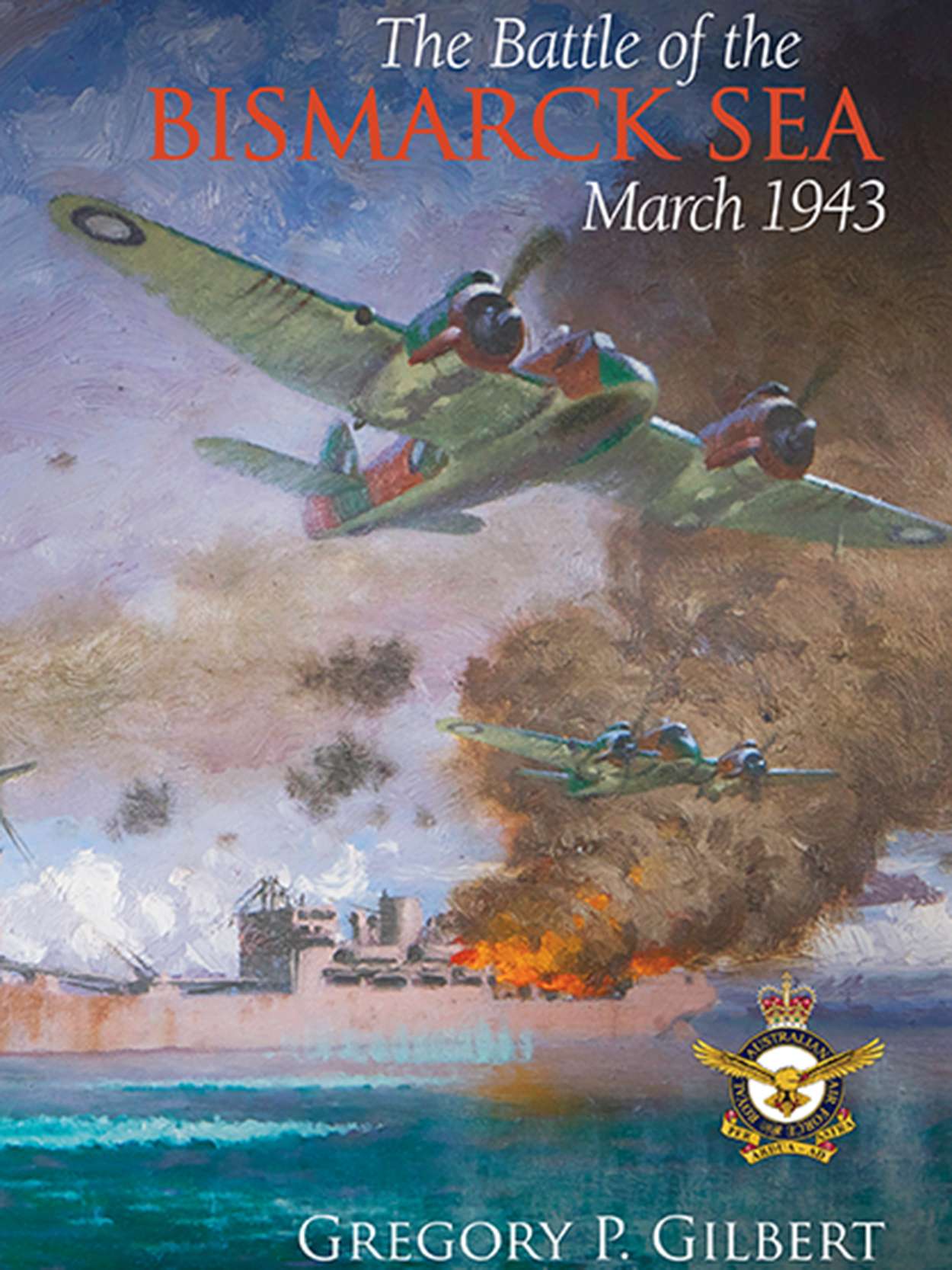Commonwealth of Australia 2013
This work is copyright. Apart from any use as permitted under the Copyright Act 1968, no part may be reproduced by any process without prior written permission. Inquiries should be made to the publisher.
Disclaimer
The views expressed in this work are those of the author and do not necessarily reflect the official policy or position of the Department of Defence, the Royal Australian Air Force or the Government of Australia. The Commonwealth of Australia will not be legally responsible in contract, tort or otherwise, for any statements made in this document.
Edited by Adam Braakman.
Cover Painting is Sweeping the Decks by Robert Honisett. Winner of the 1991 RAAF Heritage Prize for Art. (c) Royal Australian Air Force.
National Library of Australia Cataloguing-in-Publication entry
Author: Gilbert, Gregory P. (Gregory Phillip), author.
Title: The Battle of the Bismarck Sea, March 1943 / Dr. Gregory Gilbert
Publisher: The Air Power Development Centre
ISBN: 9781920800796
Subjects: Bismarck Sea, Battle of the, 1943. World War, 1943-1945--Campaigns--Pacific Ocean. Naval convoys--Japan--History--20th Century. World War, 1939-1945--Naval Operations. World War, 1939-1945--Aerial Operations.
Dewey Number: 940.5426
Published by:
Air Power Development Centre
F3, Ground Floor
Defence Establishment Fairbairn
26-28 Fairbairn Avenue
CANBERRA ACT 2600
AUSTRALIA
Telephone:+ 61 2 6128 7041
Facsimile:+ 61 2 6128 7053
E-mail:airpower@defence.gov.au
Website:www.airforce.gov.au/airpower
Preface
Any historical case-study of World War II starts with the many historians who have trawled through the sources and prepared works that provide a solid foundation for all subsequent historical research. In the case of the Battle of the Bismarck Sea, the works by George Odgers, Wesley F. Craven, James L. Cate, Samuel E. Morison, Lex McAulay, Gary Null and most recently Bruce Gamble were invaluable. A large number of archival sources were re-examined and a number of interesting documents brought to the surface during the research for this book, and this largely accounts for any differences in interpretation that have been included. The RAAF Office of Air Force Historys (OAFH) research collection was of considerable value, as were the National Archives of Australia (NAA) and the Australian War Memorial (AWM). Wherever possible, I have used the words of those who were there. There are too many to list individually but I do acknowledge the works by Generals Douglas MacArthur and George C. Kenney. Although their recollections do not always line up with the known historical facts, their views remain important for the development of perspective at the operational and strategic levels of command.
My thanks also go to the Air Power Development Centre (APDC) and the OAFH for the opportunity to write this study of such an important battle. I particularly wish to thank Dr Chris Clark for his on-going support. Dr Russell Parkin gathered considerable research material, which was of inestimable value during the preparation of this work. They have in many ways enhanced the text by suggesting useful images and vignettes. I also wish to recognise the excellent work of the APDC publication cell, particularly Adam Braakman and Graeme Smith, who prepared this book for publication.
I thank the staff of the collections areas of the OAFH, the AWM and the NAA. They have helped me to access a large amount of original material, much of which underpins the condensed version of the battle presented in this book. Inevitably this book has also drawn upon detailed studies completed by other historians particularly those identified in the recommended reading list. When dealing with the history of World War II so much has been written that very little material is ever really all that new. In the case of the South-West Pacific however, there is still much material that lies forgotten or hidden which should be of great values to modern service men and women.
Hopefully this book will inspire others to study, research, evaluate and perhaps write more on the air and sea battles fought in the northern approaches to Australia during World War II.
Gregory P. Gilbert
Canberra
February 2013
About the Author
Dr Gregory P. Gilbert is an historian with the Office of Air Force History. He worked for the Royal Australian Navys Sea Power Centre prior to his move to Air Force in 2010. He has published numerous books and articles on military history, including several papers on RAAF history. This is his first book published through the Air Power Development Centre.
Abbreviations
AA -- anti-aircraft
ATAIU -- Allied Technical Air Intelligence Unit
CAP -- Combat Air Patrol
IJA -- Imperial Japanese Army
IJN -- Imperial Japanese Navy
nm -- nautical miles
PT -- Motor Torpedo Boat
RAAF -- Royal Australian Air Force
SNLP -- Special Naval Landing Party
SWPA -- South-West Pacific Area
US -- United States
USAAF -- United States Army Air Forces
USN -- United States Navy
The South-West Pacific Area.
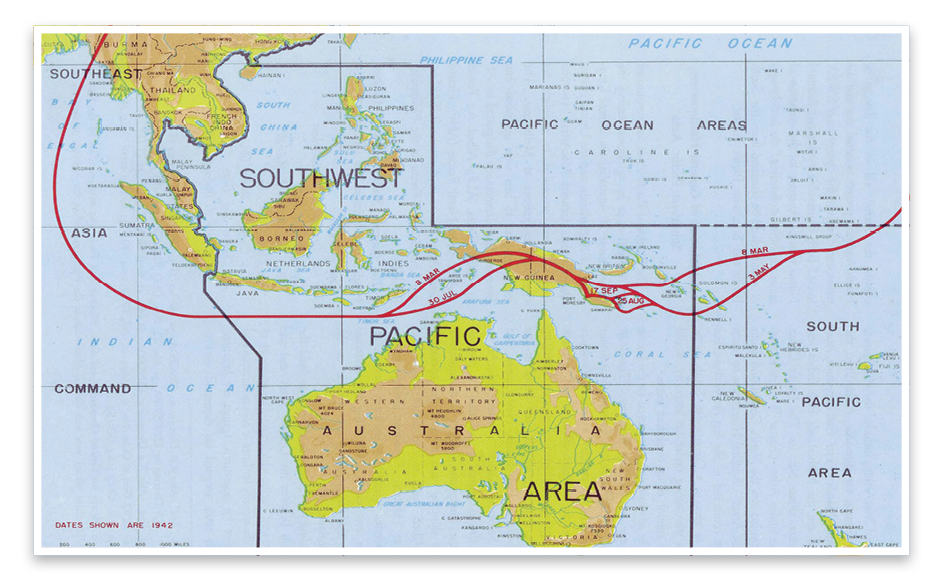
The South-West Pacific Area 1942-1943
the Battle of Bismarck Sea was the decisive aerial engagement in this theatre of war [the SWPA].
General Douglas McArthur, US Army
In Australian military history names such as Gallipoli, Kokoda and Long Tan are well known. By contrast, few Australians have heard of the Battle of the Bismarck Sea, much less of the long and bloody air campaign fought in the South-West Pacific Area (SWPA) during 1941-45. However, from an Australian perspective, the events that took place in the Huon Gulf on the morning of 3 March 1943 were a major turning point in the Pacific War, which had considerable impact upon Australias strategic outlook, its defence and its national interests. Although very few Australians knew it at the time, the Battle of the Bismarck Sea marked the end of the Japanese threat to Australia.
The Battle of the Bismarck Sea is almost forgotten. Unlike a great military clash between land forces, a battle between ships and aircraft leaves no enduring traces. There can be no monuments to mark the site of the battle and, of those who lost their lives in the combat, most have no known grave. Unlike the Battle of the Coral Sea of 1942, there are no dedicated memorials established to commemorate the Bismarck Sea battle. As a result there are few places set aside for the remembrance of those who fought or for contemplation of the battles significance. Yet, despite its relative obscurity today, during World War II the battle was a major turning point in the defence of Australia.
The Allied Commander-in-Chief of the SWPA, US General Douglas MacArthur, called the engagement, one of the most complete and annihilating combats of all time. The battle was certainly a turning point in the South-West and South Pacific theatres. It irreparably damaged Japanese plans to halt the Allied advance in New Guinea, while large Japanese forces were isolated and made impotent by superior Allied air power. From
mid-1943 until the end of the war, the Allies were able to exploit their initiative in a rapid series of amphibious operations that advanced across central and northern New Guinea to the Philippines and towards the Japanese mainland itself. Demonstrating the increasing strength of Allied air superiority, the battle was a sign post for the Allied success in attritional phase of the SWPA campaign and the beginning of the offensive phase against Japan.

